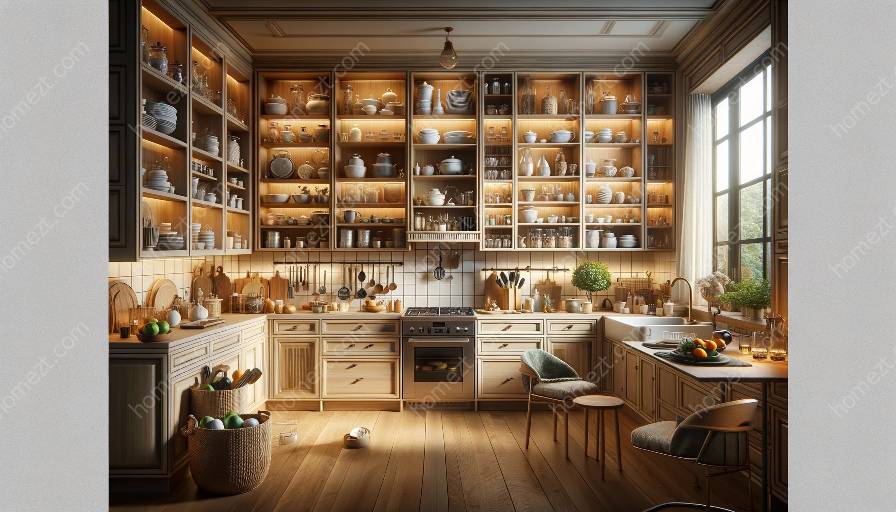In any kitchen, the cabinets are not only essential for storage but also play a significant role in influencing the overall aesthetics and functionality of the space. Therefore, when it comes to designing or renovating a kitchen, paying attention to the functional considerations in kitchen cabinet design is crucial to create a truly efficient and attractive kitchen.
Storage Options
One of the primary functional considerations in kitchen cabinet design is the storage options. Efficient storage allows for better organization and accessibility, leading to a more functional kitchen. There are various storage solutions to consider, such as pull-out drawers, lazy Susans, specialized racks for pots and pans, and vertical dividers for trays and cutting boards. Additionally, incorporating deep drawers and pull-out shelves can maximize storage capacity and make it easier to reach items at the back of the cabinets.
Optimizing Space and Layout
Another crucial aspect of functional kitchen cabinet design is optimizing the available space and layout. The layout of the cabinets should be tailored to the specific needs and habits of the homeowners. This involves considering the work triangle, which includes the sink, stove, and refrigerator, to ensure efficient workflow in the kitchen. It's essential to carefully plan the placement of cabinets to prioritize accessibility and functionality, especially in areas with high traffic.
Material Selection
Choosing the right materials for kitchen cabinets is also a key functional consideration. The materials should not only align with the overall design style but also be durable and easy to maintain. For example, solid wood cabinets offer timeless appeal and longevity, while laminates and thermofoil provide a more budget-friendly option without compromising on aesthetics. Additionally, considering the hardware, such as hinges and drawer slides, is essential to ensure smooth operation and longevity of the cabinets.
Integration with Appliances and Fixtures
Integrating kitchen cabinets with appliances and fixtures is an essential aspect of functional kitchen design. This includes incorporating features such as built-in appliances, under-cabinet lighting, and organization systems for items like spice jars and utensils. The seamless integration of cabinets with appliances and fixtures not only enhances the functionality of the kitchen but also contributes to a cohesive and visually appealing design.
Accessibility and Ergonomics
Ensuring accessibility and ergonomics within the kitchen cabinet design is crucial for creating a functional and user-friendly space. This involves considering the height and depth of cabinets to make items easily reachable, as well as incorporating features like soft-close doors and drawers for added convenience. Accessibility should be a top priority, especially for homeowners with specific mobility or ergonomic needs.
Customization and Personalization
Finally, customization and personalization are essential elements of functional kitchen cabinet design. Tailoring the cabinets to suit the specific needs and lifestyle of the homeowners can significantly enhance the functionality of the kitchen. Customized storage solutions, adjustable shelves, and personalized design elements can all contribute to a more functional and efficient kitchen space.
Conclusion
Functional considerations in kitchen cabinet design encompass a wide range of factors that are essential for creating a truly efficient and stylish kitchen. From storage options and layout to material selection and integration with appliances, paying attention to these functional considerations will result in a kitchen that not only looks great but also functions seamlessly to meet the needs of the homeowners.

